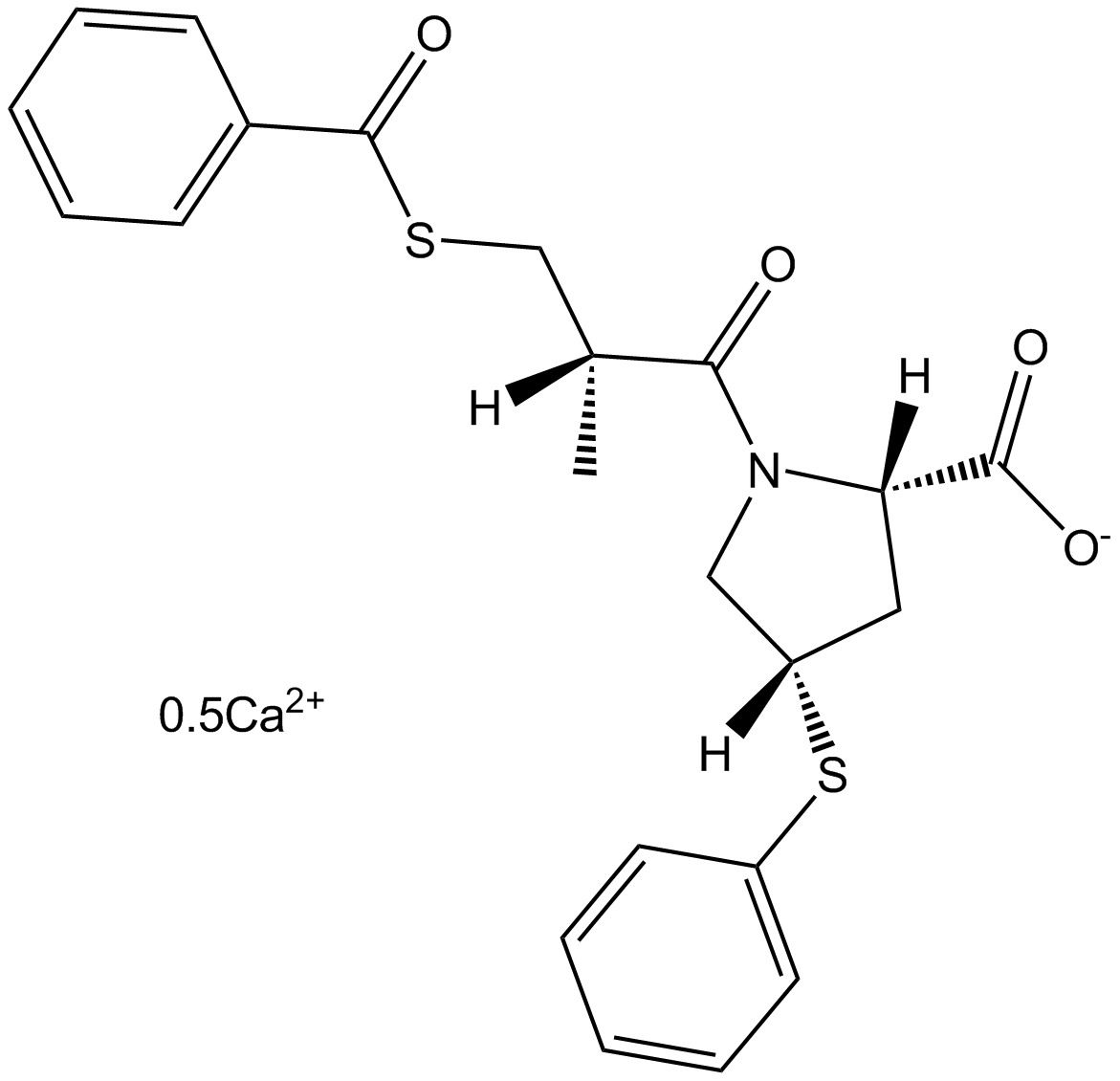Reactive Oxygen Species
Reactive oxygen species (ROS), such as superoxide anion (O2-), hydrogen peroxide (H2O2), and hydroxyl radical (HO•), consist of radical and non-radical oxygen species formed by the partial reduction of oxygen. Cellular ROS are generated endogenously during mitochondrial oxidative metabolism as well as in cellular response to xenobiotics, cytokines, and bacterial invasion.
ROS also activates MAPK pathways by the direct inhibition of MAPK phosphatases. Through PTEN, the PI3K pathway is subject to reversible redox regulation by ROS generated by growth factor stimulation. The activation of autophagy may be a cellular defense mechanism in response to ROS.
Ziele für Reactive Oxygen Species
Produkte für Reactive Oxygen Species
- Bestell-Nr. Artikelname Informationen
-
GC47980
Propionyl-L-carnitine-d3 (chloride)
An internal standard for the quantification of propionyl-L-carnitine
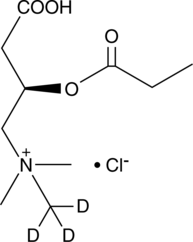
-
GC49120
Prosaptide TX14(A) (trifluoroacetate salt)
A peptide fragment of prosaposin and GPR37L1 and GPR37 agonist

-
GN10805
Protopanaxdiol
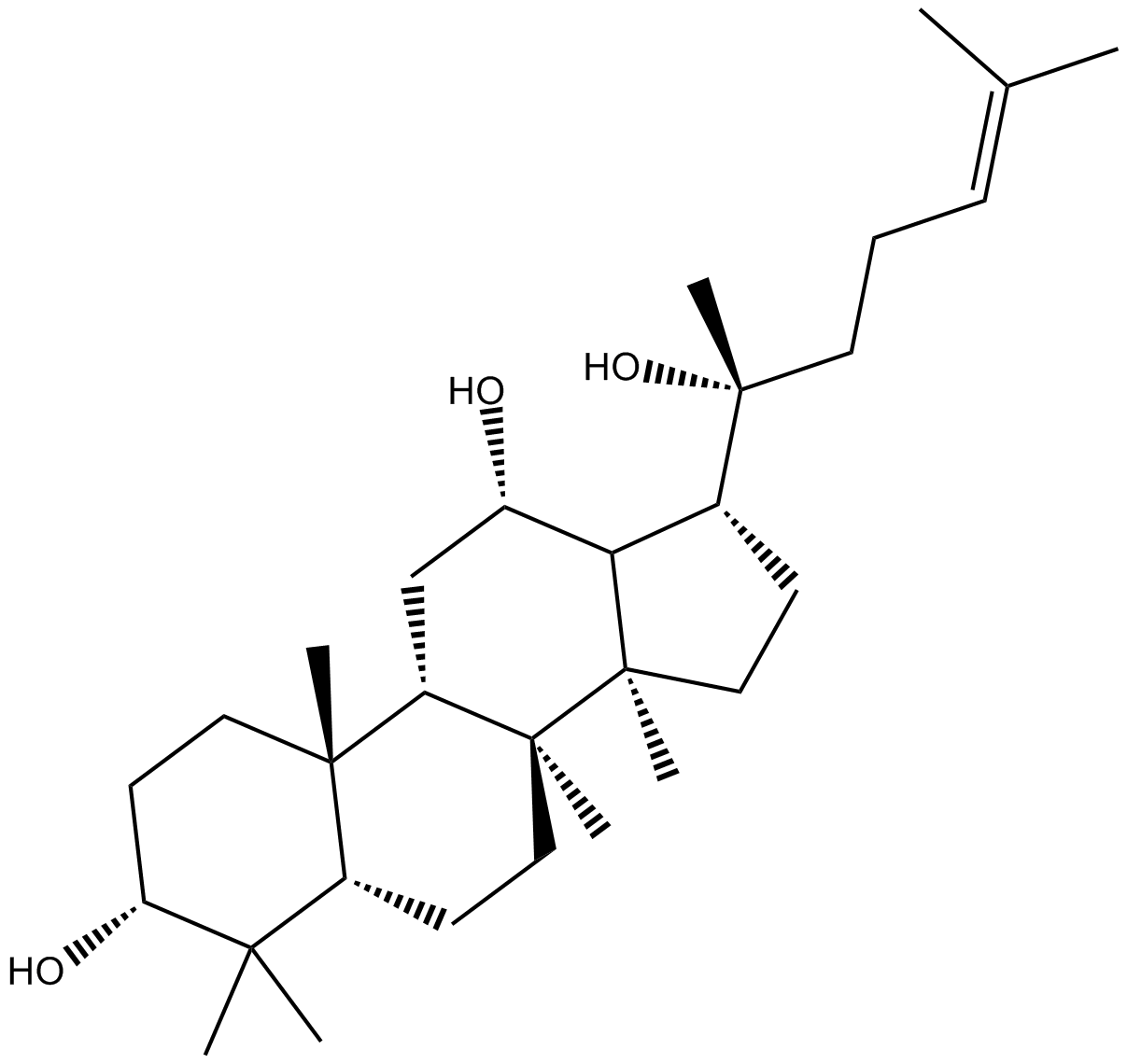
-
GN10237
Protopine
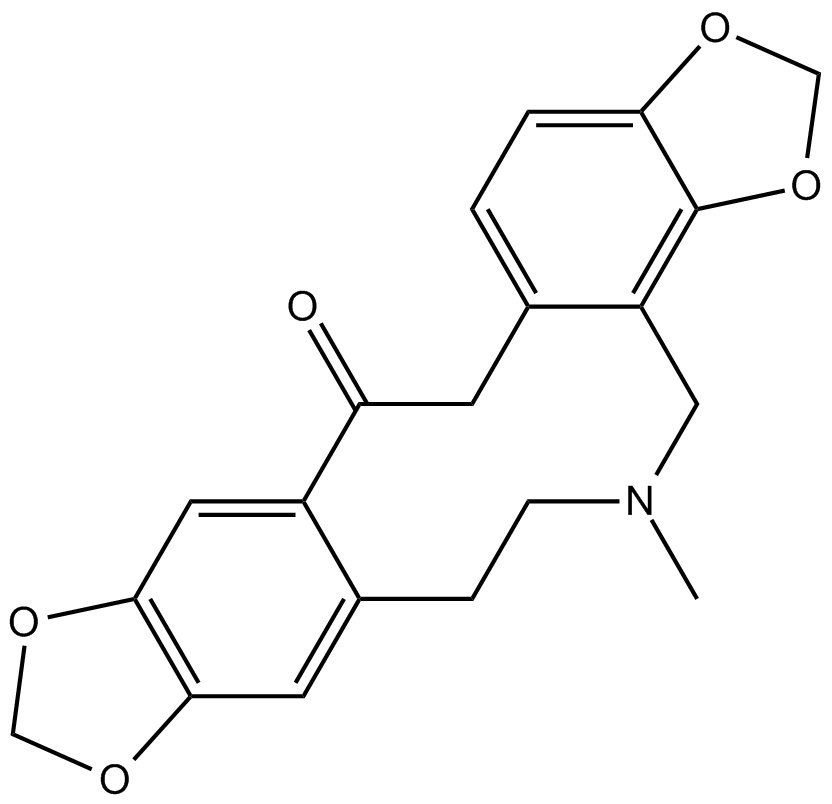
-
GC14847
Psoralidin
Psoralidin ist ein dualer Inhibitor von COX-2 und 5-LOX und reguliert durch ionisierende Strahlung (IR) induzierte LungenentzÜndungen. Anti-Krebs-, antibakterielle und entzÜndungshemmende Eigenschaften. Psoralidin reguliert die NOTCH1-Signalgebung signifikant herunter. Psoralidin induziert auch stark die ROS-Erzeugung.
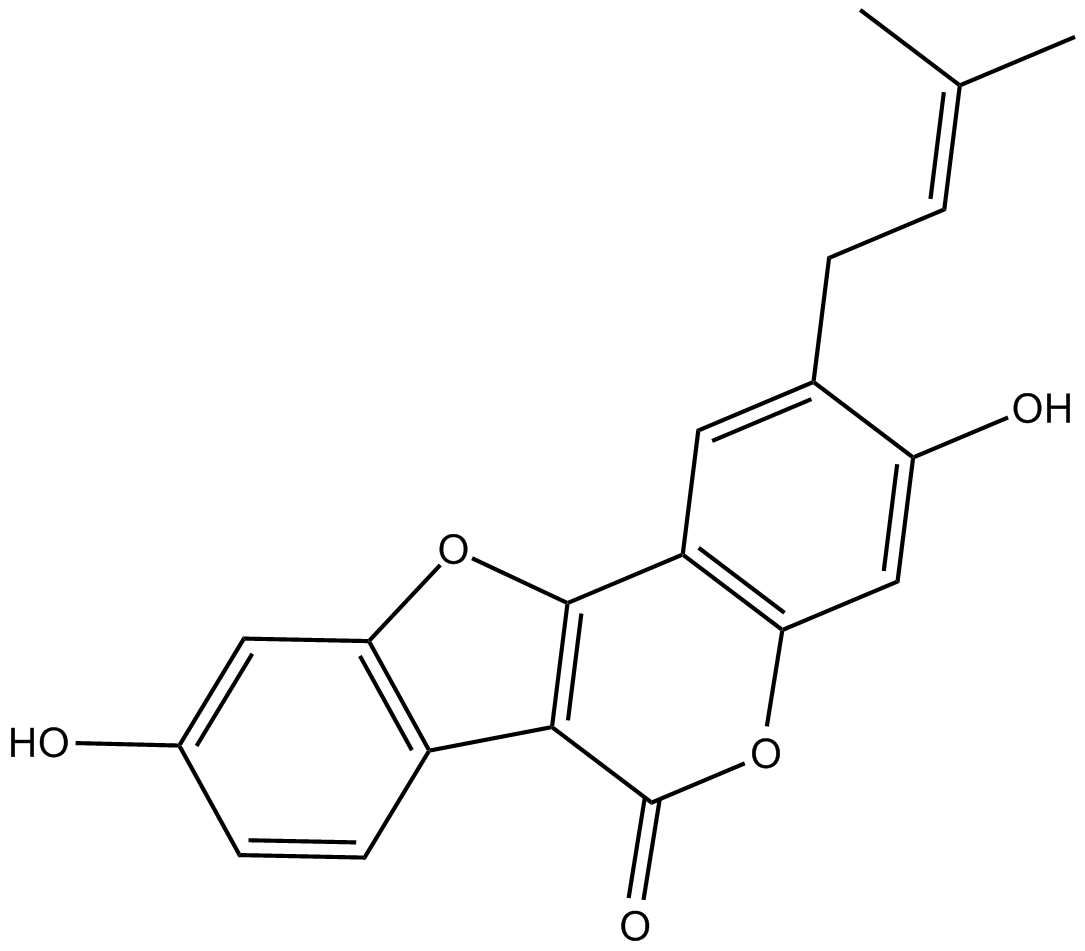
-
GC40006
Pyranonigrin A
Pyranonigrin A wird aus Penicillium brocae MA-231 isoliert und identifiziert.
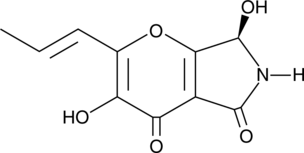
-
GC48019
Quercetin (hydrate)
A flavonoid with diverse biological activities
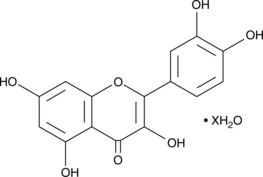
-
GN10814
Quercitrin
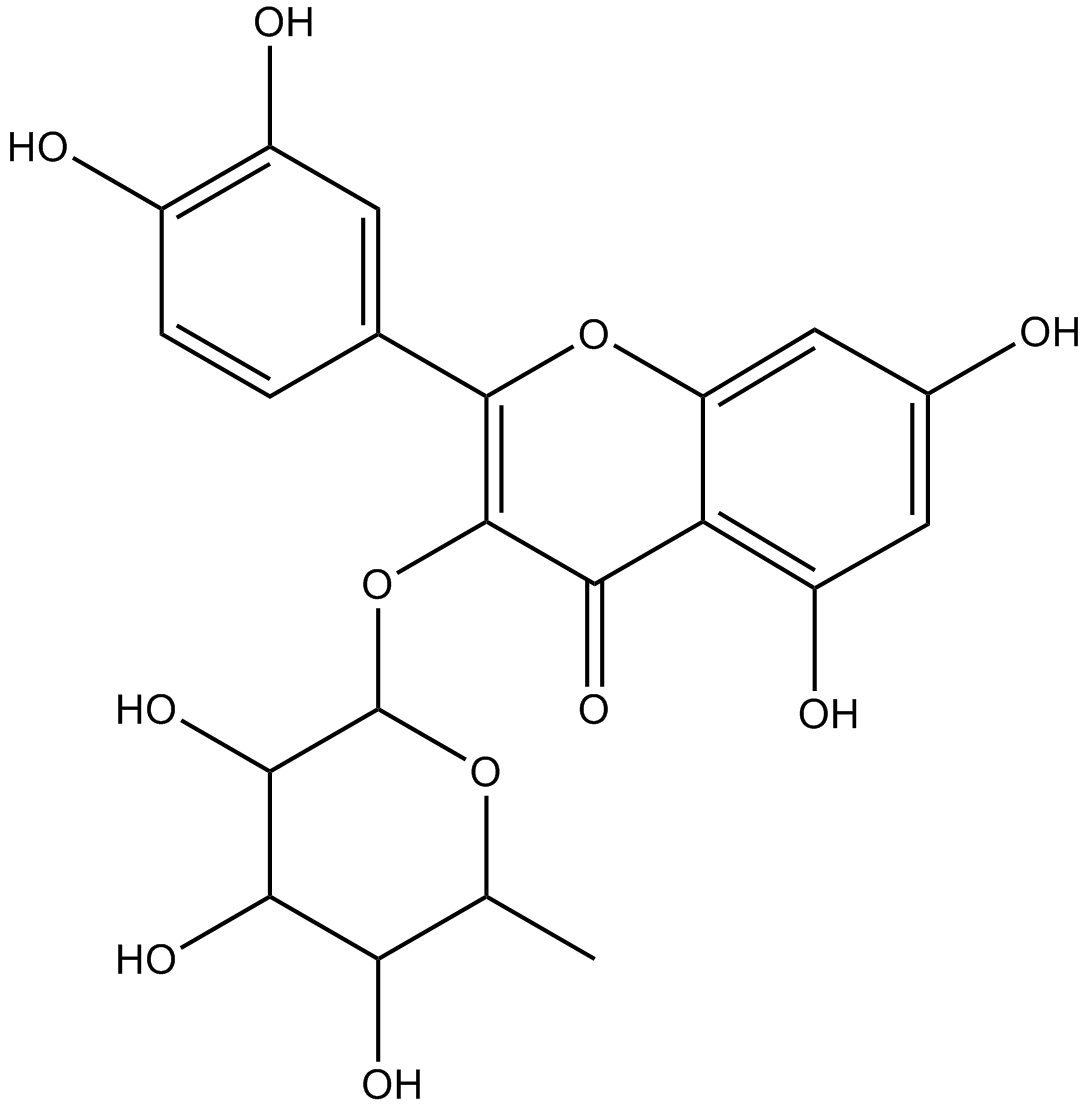
-
GC62399
RA375
RA375 ist ein RPN13 (26S Proteasom regulatorische Untereinheit)-Inhibitor. RA375 aktiviert UPR-Signalisierung, ROS-Produktion und Apoptose. RA375 zeigt eine zehnmal hÖhere AktivitÄt gegen Krebslinien als RA190, was seine Nitroring-Substituenten und die HinzufÜgung eines Chloracetamid-Sprengkopfs widerspiegelt.
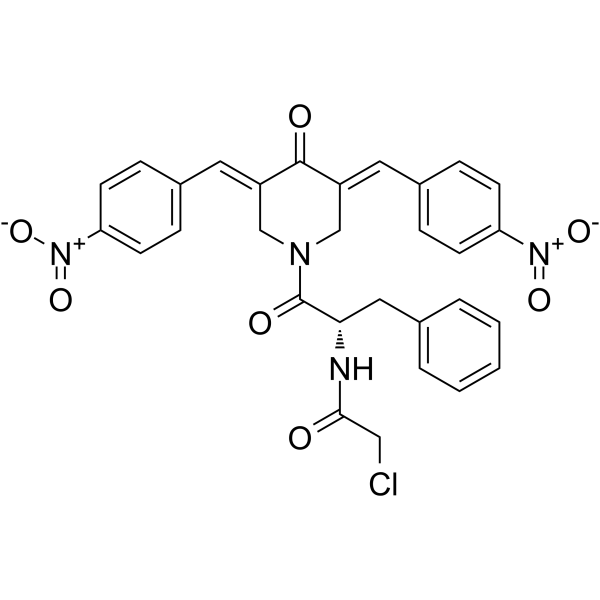
-
GC66363
Randialic acid B
RandialinsÄure B, eine Triterpenoidverbindung, ist ein Antagonist des Formylpeptidrezeptors 1 (FPR1). RandialinsÄure B blockiert FPR1 in menschlichen Neutrophilen und schwÄcht Psoriasis-Ähnliche EntzÜndungen in vivo ab.
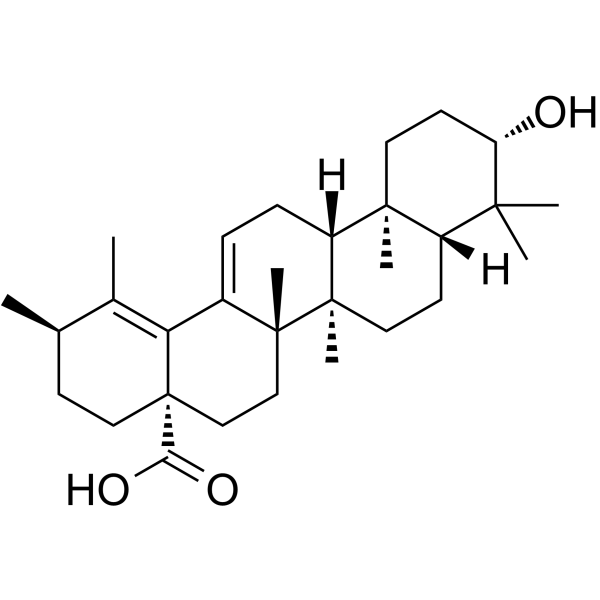
-
GC48029
RC363
An inhibitor of ferroptosis
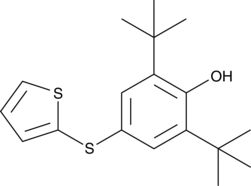
-
GC48030
RC574
An inhibitor of ferroptosis
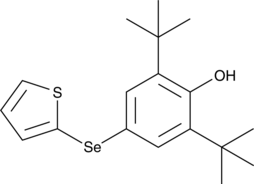
-
GC49790
Reuterin
Reuterin ist ein antimikrobielles Breitbandmittel, das gegen grampositive und gramnegative Bakterien sowie Hefen, Schimmelpilze und Protozoen wirkt.

-
GC34758
Reynoutrin
Reynoutrin (Quercetin-3-D-Xylosid) ist ein Flavonoid aus Psidium Cattleianum mit antioxidativer und RadikalfÄnger-AktivitÄt.
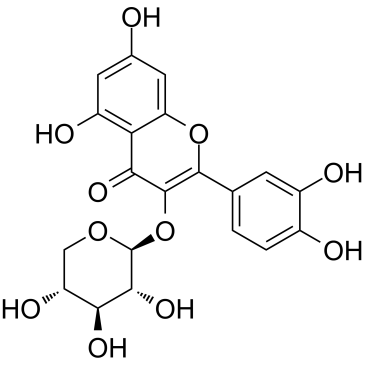
-
GN10475
Rhein
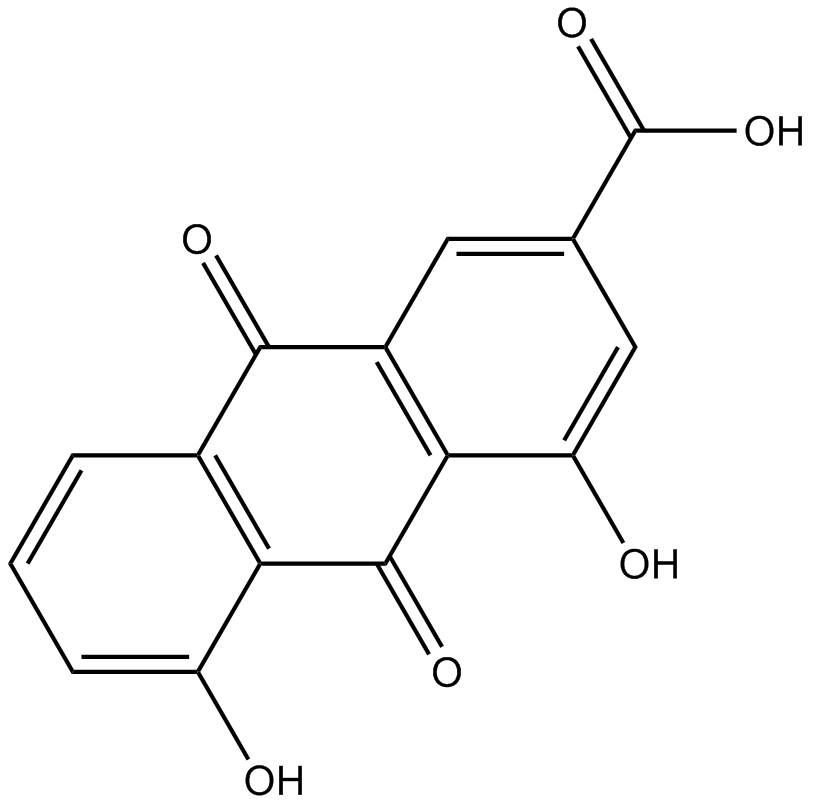
-
GC37531
Riboflavin Tetrabutyrate
Riboflavintetrabutyrat ist ein lipophiles Flavinderivat mit antioxidativer und Lipidperoxid entfernender Wirkung.
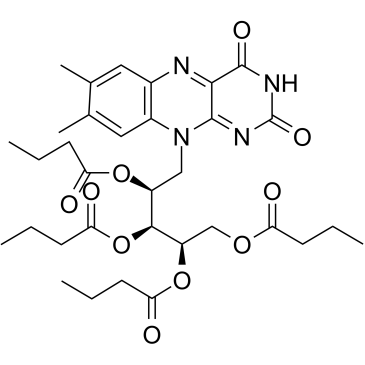
-
GC67903
RIDR-PI-103

-
GC39239
Rifamycin S
Rifamycin S, ein Chinon, ist ein Antibiotikum gegen grampositive Bakterien (einschließlich MRSA).
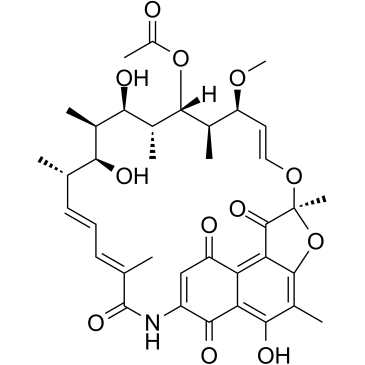
-
GC48401
Risuteganib (trifluoroacetate salt)
An anti-integrin peptide
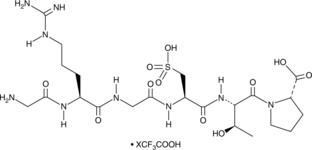
-
GC69831
ROS-ERS inducer 1
ROS-ERS Inducer 1 ist ein Typ-II-ICD (immunogenes Zelltod) Induktor. ROS-ERS Inducer 1 ist eine Verbindung aus einem Pt(II)-N-Heterocyclischen Carben (Pt(II)-NHC) Komplex, der aus 4,5-Diphenylimidazol stammt. ROS-ERS Inducer 1 induziert erfolgreich endoplasmatischen Stress (ERS) mit begleitender Produktion von reaktiven Sauerstoffspezies (ROS), was schließlich zur Freisetzung von Schadens-assoziierten Molekularmustern (DAMPs) in HCC-Zellen führt. ROS-ERS Inducer 1 zeigt eine viel höhere Anti-Krebs-Aktivität als Cisplatin.

-
GC39100
Rutaevin
Rutaevin wird aus den FrÜchten von Euodia rutaecarpa isoliert.
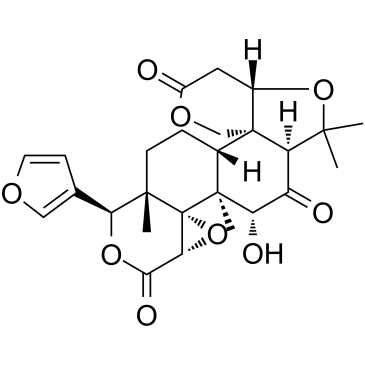
-
GN10693
Rutin
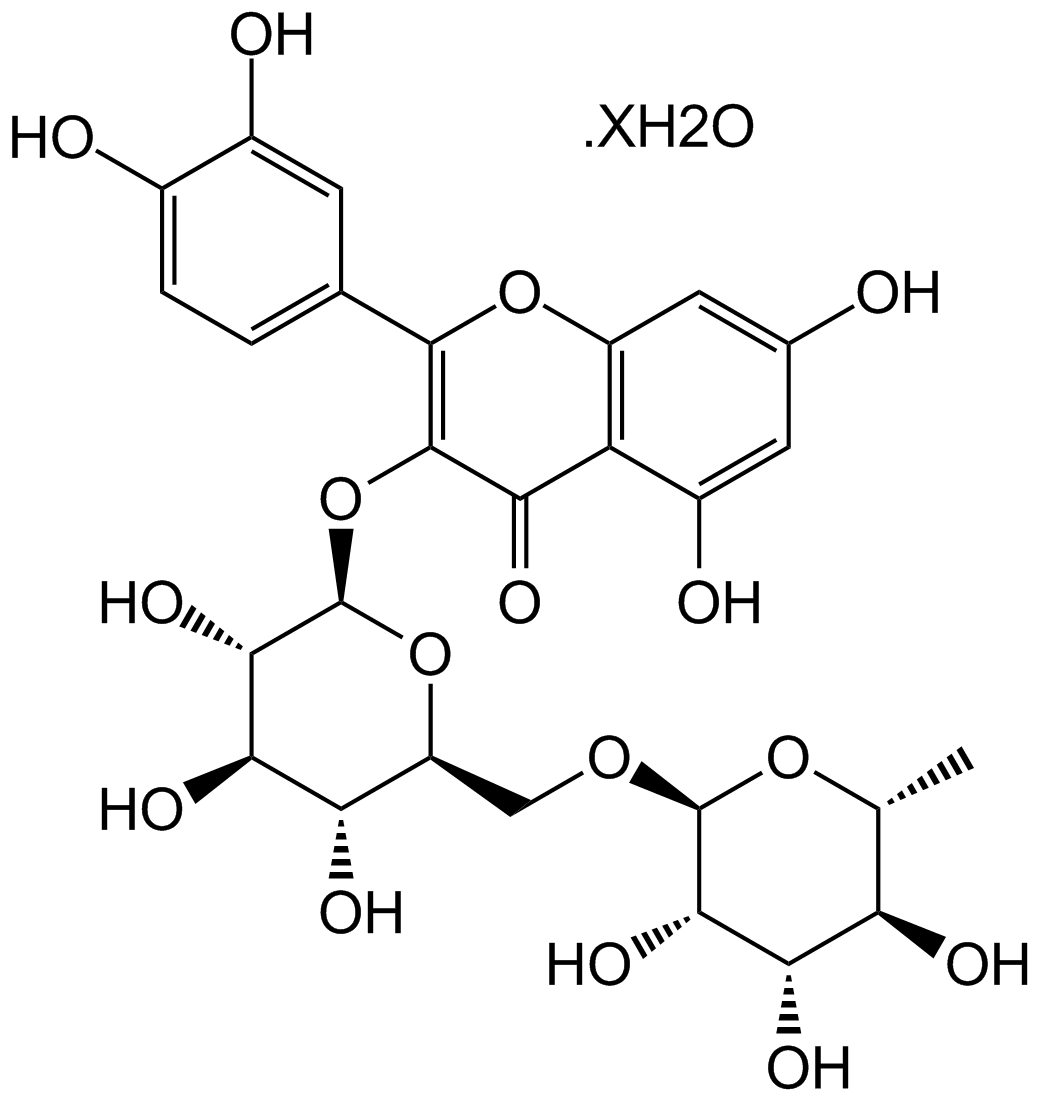
-
GC44860
S1QEL1.1
S1QEL1.1 is a small molecule that suppresses superoxide production during reverse electron transport through the IQ site of the mitochondrial respiratory complex I (IC50 = 70 nM) without affecting oxidative phosphorylation.

-
GC12517
Sasapyrine
Sasapyrin, ein nicht acetyliertes Salicylat, ist ein wirksames Antirheumatikum, das die Magenabsorption umgeht und auch die Hemmung der Cyclooxygenase vermeidet.
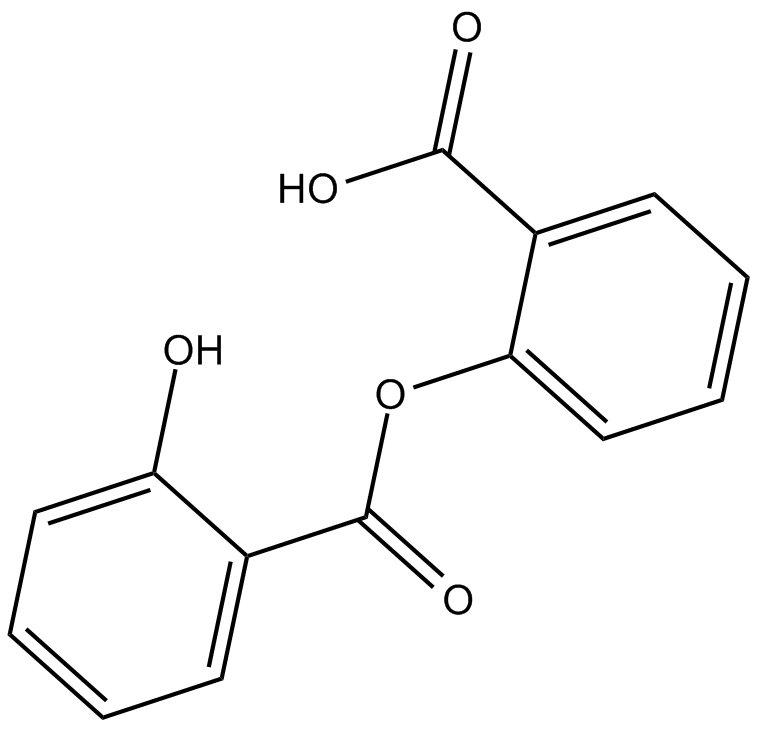
-
GC46219
Satratoxin H
A trichothecene mycotoxin
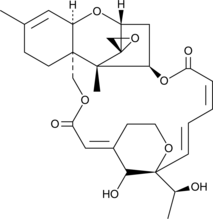
-
GN10132
Schizandrin B
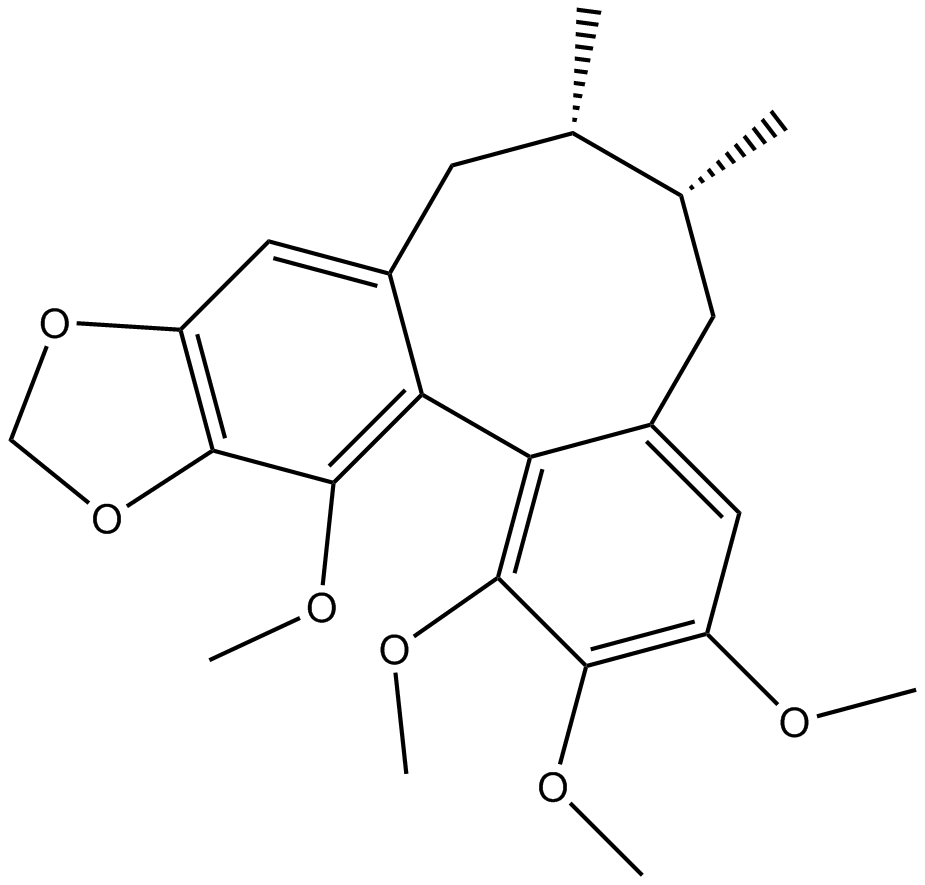
-
GC48973
Sekikaic Acid
A lichen metabolite with diverse biological activities
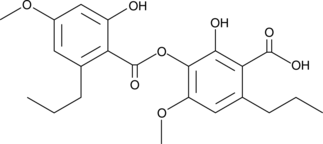
-
GC62242
Sideroxylin
Sideroxylin ist ein C-methyliertes Flavon, das aus Callistemon lanceolatus isoliert wurde und eine antimikrobielle AktivitÄt gegen Staphylococcus aureus ausÜbt.
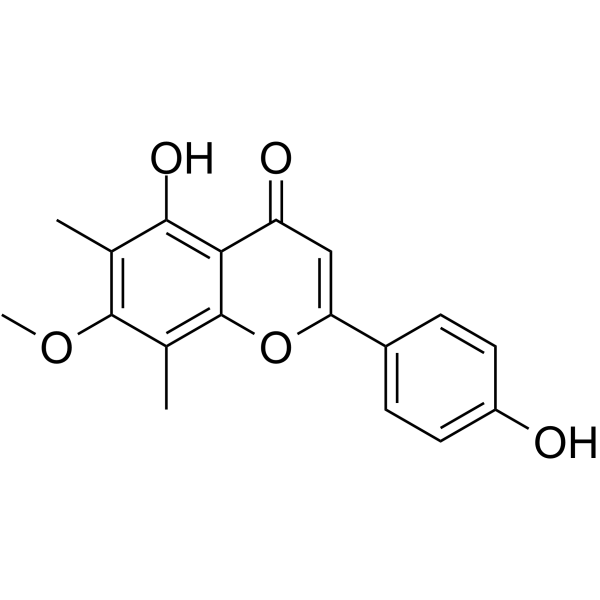
-
GN10292
Silibinin
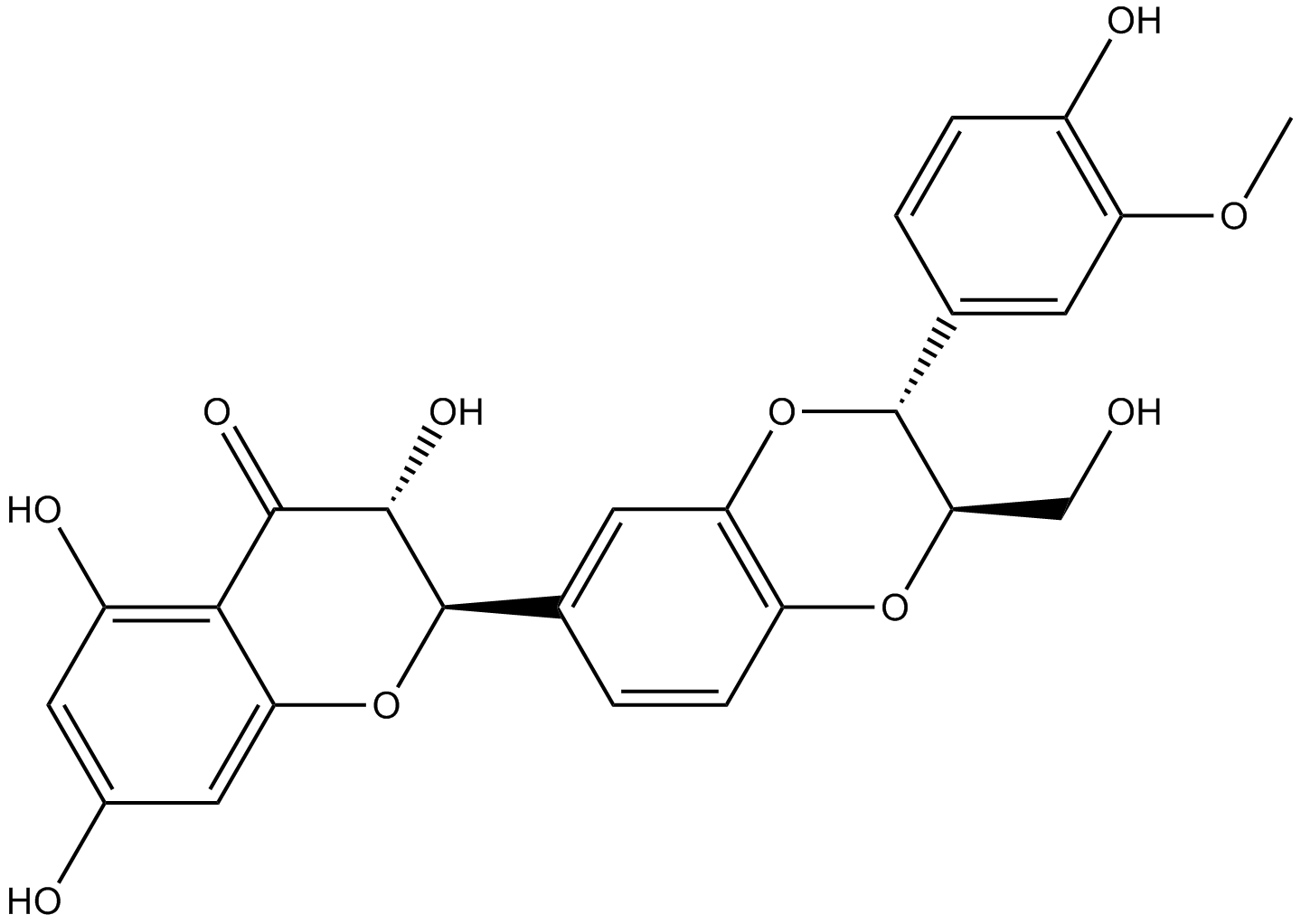
-
GC30033
Sinapine thiocyanate
Sinapinthiocyanat ist ein Alkaloid, das aus Samen der KreuzblÜtlerart isoliert wird. Sinapinthiocyanat weist entzÜndungshemmende, antioxidative, tumorhemmende, antiangiogene und strahlenschÜtzende Wirkungen auf. Sinapinthiocyanat ist auch ein Acetylcholinesterase (AChE)-Hemmer und kann fÜr die Erforschung der Alzheimer-Krankheit, Ataxie, Myasthenia gravis und Parkinson-Krankheit verwendet werden.
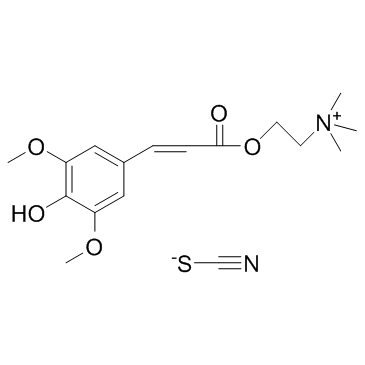
-
GC31511
Sinapinic acid (Sinapic acid)
SinapinsÄure (SinapinsÄure) (SinapinsÄure) ist eine phenolische Verbindung, die aus Hydnophytum formicarum Jack isoliert wird.
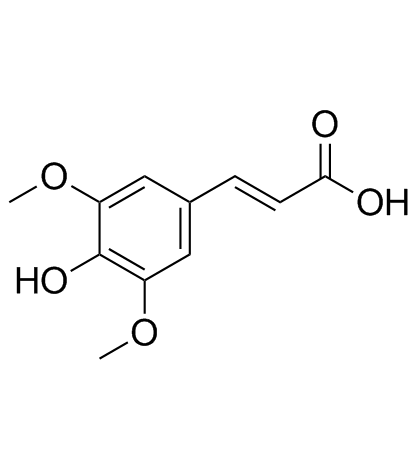
-
GC13616
Sodium ascorbate
Natriumascorbat (Natrium-L-ascorbat), ein Elektronendonator, ist ein kÖrpereigenes Antioxidans. Natriumascorbat hemmt selektiv Cav3.2-KanÄle mit einem IC50 von 6,5 μM. Natriumascorbat ist auch ein KollagenablagerungsverstÄrker und ein Elastogenesehemmer.
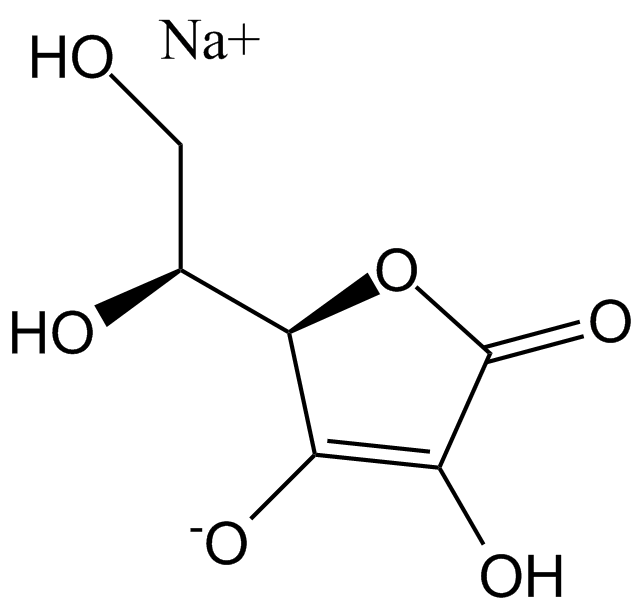
-
GC37661
Sodium formononetin-3'-sulfonate
Natriumformononetin-3'-sulfonat (Sul-F) ist ein Wassersol.
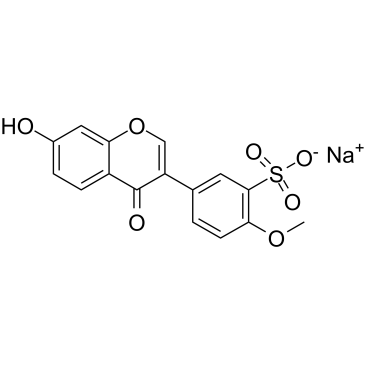
-
GC62370
Sodium thiocyanate
Natriumthiocyanat senkt die Plasmaspiegel des entzÜndungsfÖrdernden Zytokins IL-6 und erhÖht die Spiegel des entzÜndungshemmenden Zytokins IL-10.
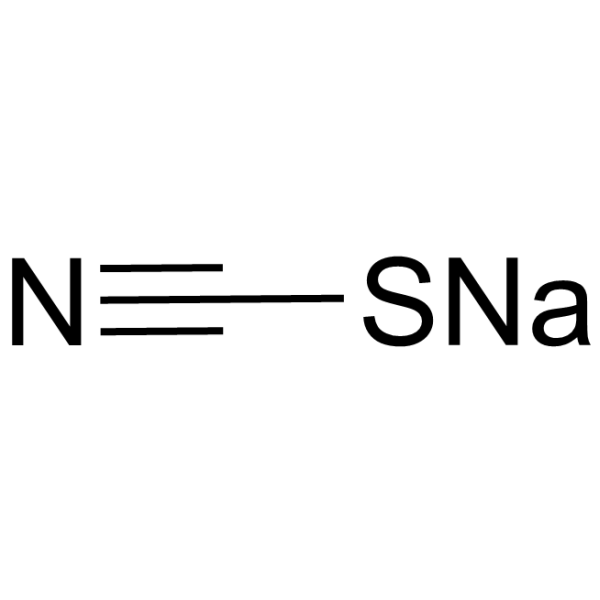
-
GC63197
Sonlicromanol
Sonlicromanol (KH176) ist ein oral aktiver Modulator fÜr reaktive Sauerstoffspezies (ROS) fÜr die Untersuchung von mitochondrialen Erkrankungen.
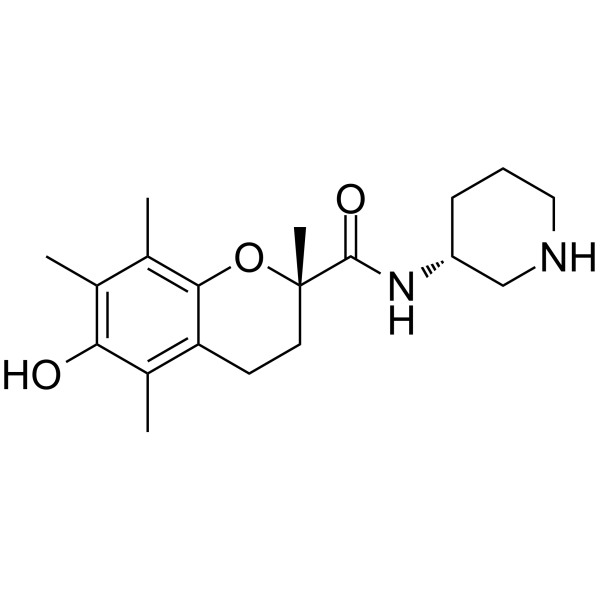
-
GC63198
Sonlicromanol hydrochloride
Sonlicromanol (KH176) Hydrochlorid, ein chemisches Derivat von Trolox, ist ein ROS-Redox-Modulator, der die Blut-Hirn-Schranke durchdringt.
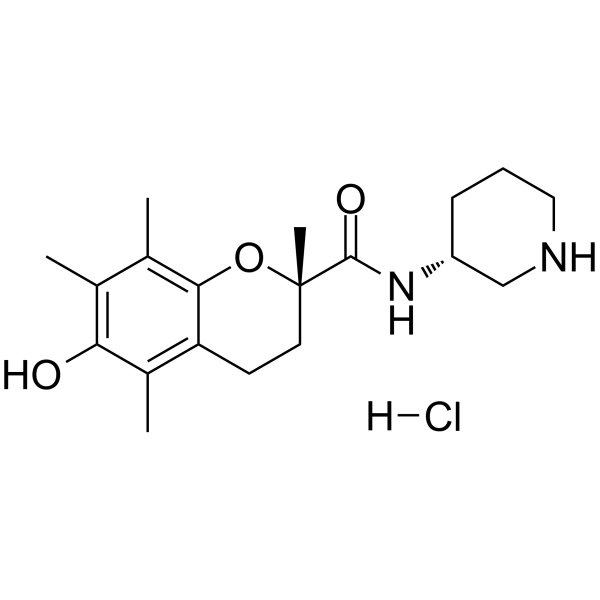
-
GC44918
SOTS-1 (technical grade)
Superoxide radical anion is a toxic by-product of mitochondrial respiration that is formed from approximately 1-4% of the oxygen metabolized by aerobic organisms.

-
GC64234
Spiraeoside
Spiraeosid, eine oral aktive natÜrliche Verbindung, Übt antioxidative AktivitÄt aus, hemmt reaktive Sauerstoffspezies (ROS) und die Produktion von Malondialdehyd.
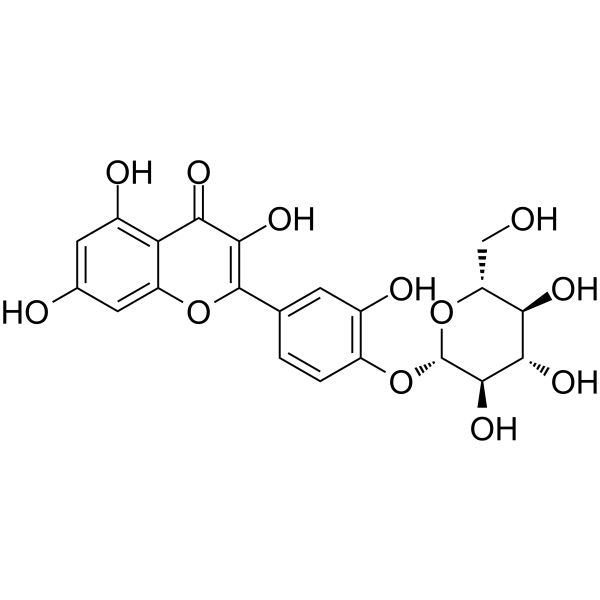
-
GC32216
Squalene (Super Squalene)
Squalen (Super-Squalen) ist ein Zwischenprodukt bei der Synthese von Cholesterin und zeigt mehrere pharmakologische Eigenschaften wie hypolipidÄmische, hepatoprotektive, kardioprotektive, antioxidative und antitoxische AktivitÄt.
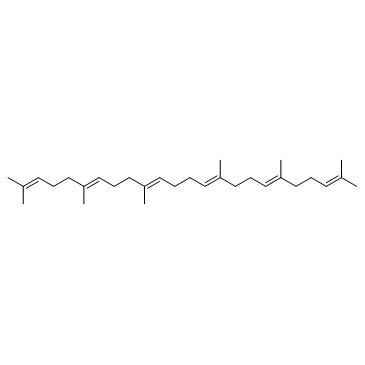
-
GC40922
SRS11-92
SRS11-92, ein Ferrostatin-1 (Fer-1)-Analogon, ist ein potenter Ferroptose-Hemmer.
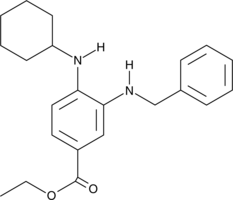
-
GC44947
SRS16-86
SRS16-86 ist ein potenter Inhibitor der Ferroptose.
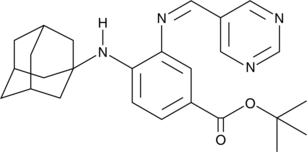
-
GC49500
Stobadine
A pyridoindole antioxidant
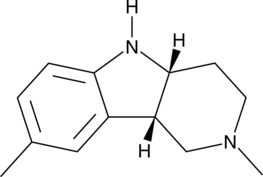
-
GC31709
Succinobucol (AGI-1067)
Succinobucol (AGI-1067) ist ein phenolisches Antioxidans mit entzÜndungshemmender und gerinnungshemmender Wirkung.
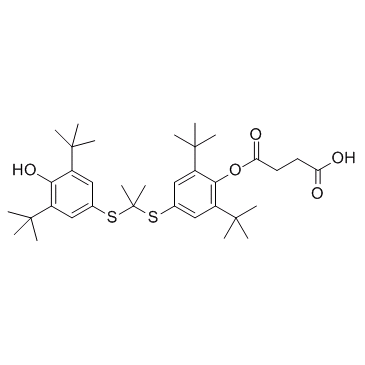
-
GC37700
Succinyl phosphonate trisodium salt
Succinylphosphonat-Trinatriumsalz ist ein Inhibitor der α-Ketoglutarat-Dehydrogenase (KGDHC), der wirksame Hemmer (KGDHC) in Muskel-, Bakterien-, Gehirn- und kultivierten menschlichen Fibroblasten ist.
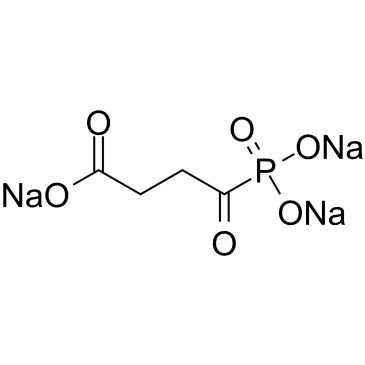
-
GC30532
Sulcotrione
Sulcotrion ist ein β-Triketon-Herbizid, das die Hydroxyphenylpyruvat-Dioxygenase (HPPD) hemmen kann.
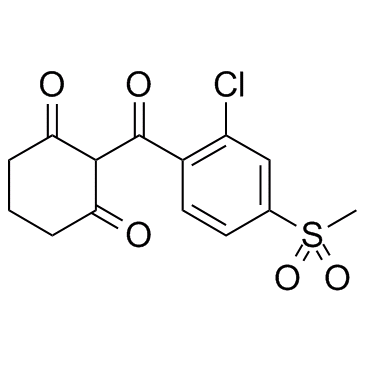
-
GC48764
Sydowinin B
A xanthone polyketide with immunosuppressant activity
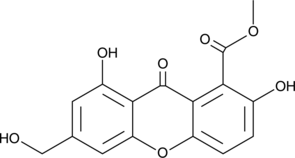
-
GC44989
TAN 420E
TAN 420E is a bacterial metabolite originally isolated from Streptomyces.
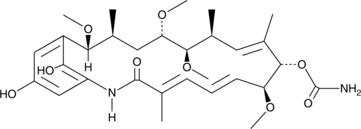
-
GC49426
Taurine-d4
An internal standard for the quantification of taurine
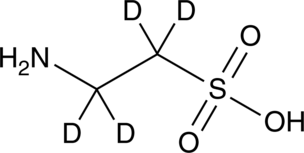
-
GC39512
Tempo
Tempo ist ein klassisches Nitroxid-Radikal und ein selektiver ROS-FÄnger, der Superoxid im Katalysezyklus dismutiert. Tempo induziert einen DNA-Strangbruch. Tempo kann als Organokatalysator fÜr die Oxidation von primÄren Alkoholen zu Aldehyden eingesetzt werden. Tempo hat mutagene und antioxidative Wirkungen.
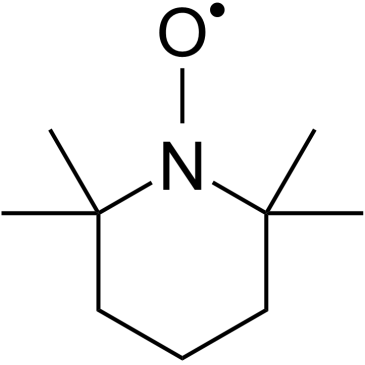
-
GC45010
TEMPONE
2,2,6,6-Tetramethylpiperidin-1-oxyl (TEMPO) is a stable radical that will react with reactive oxygen species (ROS).
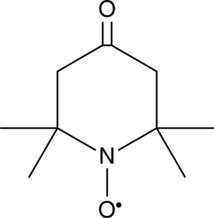
-
GC34115
Tetrahydroxyquinone (Tetrahydroxy-1,4-benzoquinone)
Tetrahydroxychinon (Tetrahydroxy-1,4-benzochinon) (Tetrahydroxy-1,4-benzochinon), ein primitives Mittel gegen Katarakt, ist ein redoxaktives Benzochinon. Tetrahydroxychinon (Tetrahydroxy-1,4-benzochinon) kann an einem Redoxzyklus mit Semichinonradikalen teilnehmen, was zur Bildung von reaktiven Sauerstoffspezies (ROS) fÜhrt.
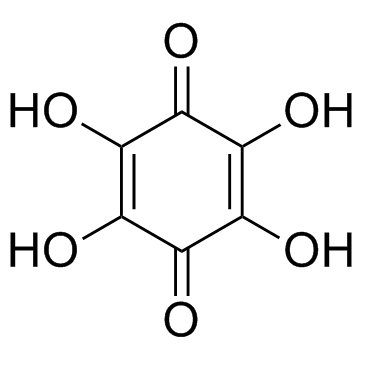
-
GC61665
Tetrahydroxyquinone monohydrate
Tetrahydroxychinonmonohydrat (Tetrahydroxy-1,4-benzochinonmonohydrat), ein primitives Mittel gegen Katarakt, ist ein redoxaktives Benzochinon. Tetrahydroxychinonmonohydrat kann an einem Redoxzyklus mit Semichinonradikalen teilnehmen, was zur Bildung von reaktiven Sauerstoffspezies (ROS) fÜhrt.
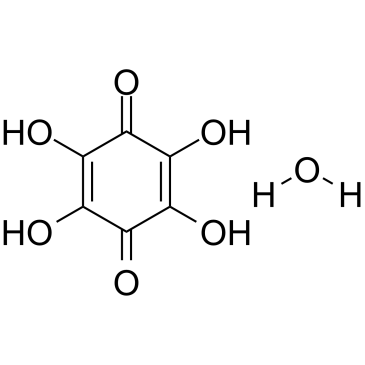
-
GC48162
Theobromine-d6
An internal standard for the quantification of theobromine
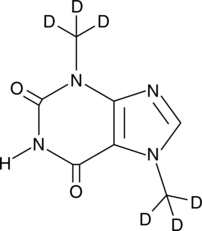
-
GC45578
Thymohydroquinone
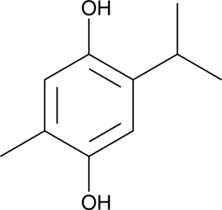
-
GC49062
Tiopronin-d3
Tiopronin-d3 ist das mit Deuterium bezeichnete Tiopronin.
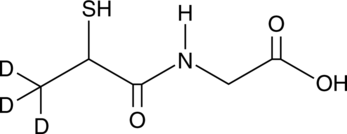
-
GC45059
TMB (hydrochloride hydrate)
TMB is an aromatic amine that undergoes oxidation by the higher oxidation states of heme peroxidases (compounds I and II) thereby serving as a reducing co-substrate.

-
GC31377
Tofogliflozin hydrate (CSG-452 hydrate)
Tofogliflozin-Hydrat (CSG-452-Hydrat) ist ein potenter und hochspezifischer Natrium/Glucose-Cotransporter 2 (SGLT2)-Inhibitor mit einem IC50 von 2,9 nM und Ki-Werten von 2,9 nM, 14,9 nM und 6,4 nM fÜr SGLT2 von Mensch, Ratte und Maus .
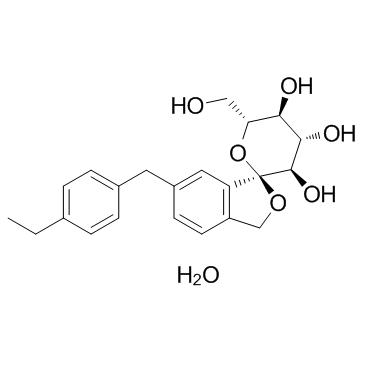
-
GC45066
Tosyl Phenylalanyl Chloromethyl Ketone
Tosyl-Phenylalanyl-Chloromethyl-Keton (L-1-Tosylamido-2-Phenylethyl-Chloromethyl-Keton; L-Tosyl-Phenylalanyl-Chloromethyl-Keton) ist ein potenter Serinprotease-Inhibitor, der mit dem Retinoblastoma-Protein (RB)-bindenden Kern des HPV-18-E7-Proteins reagiert und abschafft seine RB-BindungsfÄhigkeit.
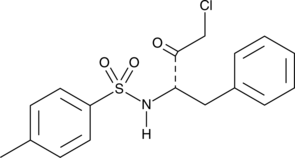
-
GC48194
trans-Resveratrol-d4
An internal standard for the quantification of trans-resveratrol
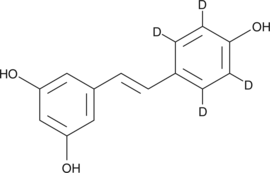
-
GC40736
trans-trismethoxy Resveratrol
Trans-Trimethoxyresveratrol ist ein Derivat von Resveratrol (RSV) und kann im Vergleich zu Resveratrol ein wirksameres entzÜndungshemmendes, antiangiogenes und gefÄßzerstÖrendes Mittel sein.
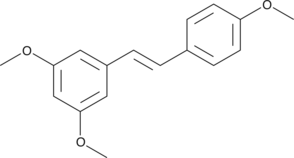
-
GC48414
Tribuloside (hydrate)
A flavonoid with antibacterial and antioxidant activities
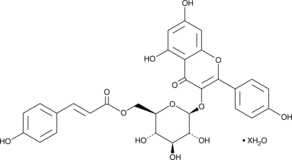
-
GC40928
Trimethylamine N-oxide
Trimethylamin-N-oxid (TMAO) ist ein Produkt der Oxidation von TMA durch Flavin-haltige Monooxygenase 3 in der Leber.
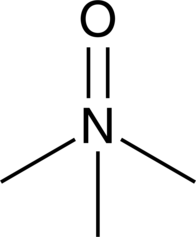
-
GC19457
Trolox
Trolox ist ein zellgängiger, wasserlöslicher Derivat von Vitamin E mit starken antioxidativen Eigenschaften.
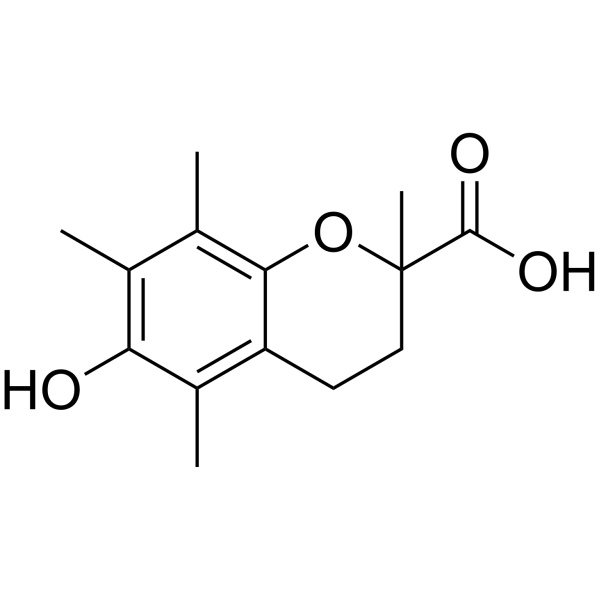
-
GC68461
TrxR-IN-5

-
GC49329
Turkesterone (hydrate)
A phytoecdysteroid with diverse biological activities
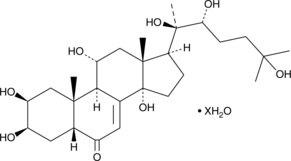
-
GC33827
Uric acid
HarnsÄure, FÄnger von Sauerstoffradikalen, ist ein sehr wichtiges Antioxidans, das hilft, die StabilitÄt des Blutdrucks und antioxidativen Stress aufrechtzuerhalten.

-
GC15168
Urolithin A
Ein Darmmikroben-Metabolit von Ellagsäure.
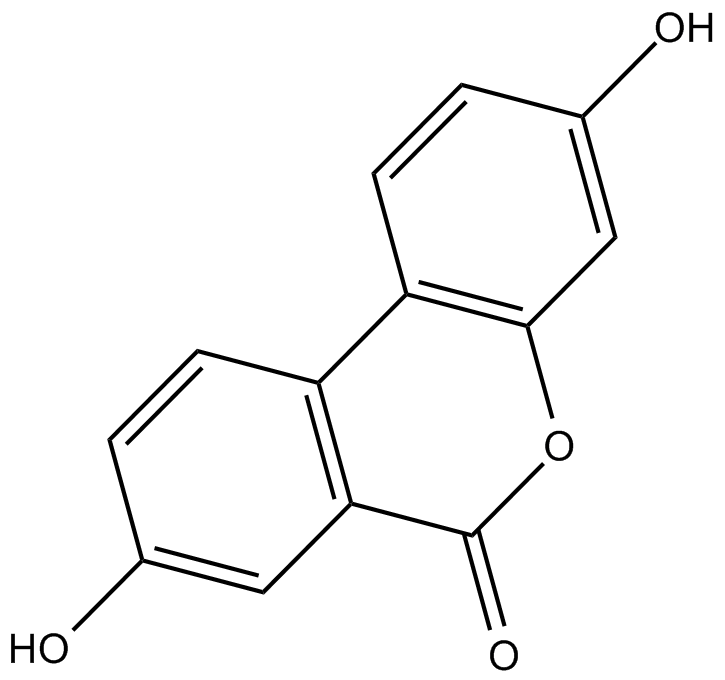
-
GC60377
Urolithin C
Urolithin C, ein darmmikrobieller Metabolit von EllagsÄure, ist ein Glukose-abhÄngiger Aktivator der Insulinsekretion.
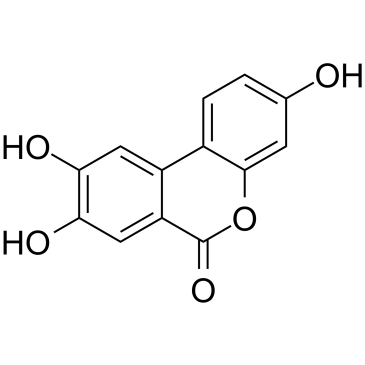
-
GC61371
Veratric acid
VeratrinsÄure (3,4-DimethoxybenzoesÄure) ist eine oral aktive Phenolverbindung, die aus GemÜse und FrÜchten gewonnen wird und antioxidative und entzÜndungshemmende Wirkungen hat.
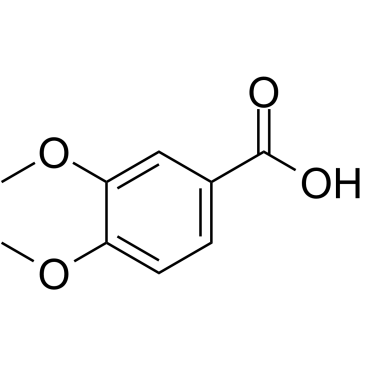
-
GC33632
Veratric acid (3,4-Dimethoxybenzoic acid)
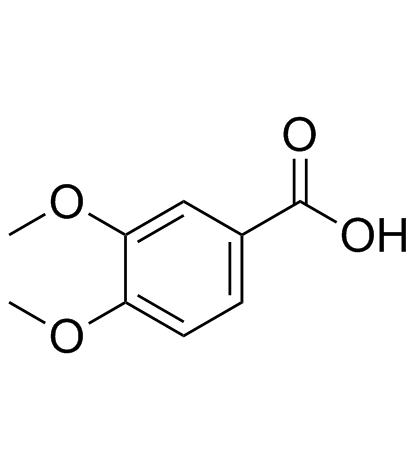
-
GC48247
Verrucarin A
Verrucarin A (Muconomycin A), ein makrozyklisches Mykotoxin vom Typ D, das aus dem pathogenen Pilz Myrothecium verrucaria stammt, ist ein Inhibitor der Proteinsynthese. Verrucarin A hemmt das Wachstum von LeukÄmie-Zelllinien und aktiviert Caspasen sowie Apoptose und EntzÜndungssignale in Makrophagen. Verrucarin A erhÖhte effektiv die Phosphorylierung von p38 MAPK und verringerte die Phosphorylierung von ERK/Akt. Verrucarin A verursachte eine Deregulierung des Zellzyklus durch die Induktion von p21 und p53.
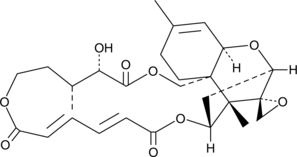
-
GC19377
Visomitin
Visomitin (SKQ1) ist ein auf die Mitochondrien gerichtetes Antioxidans mit hoher DurchdringungsfÄhigkeit der Mitochondrienmembran und starker antioxidativer Wirkung.
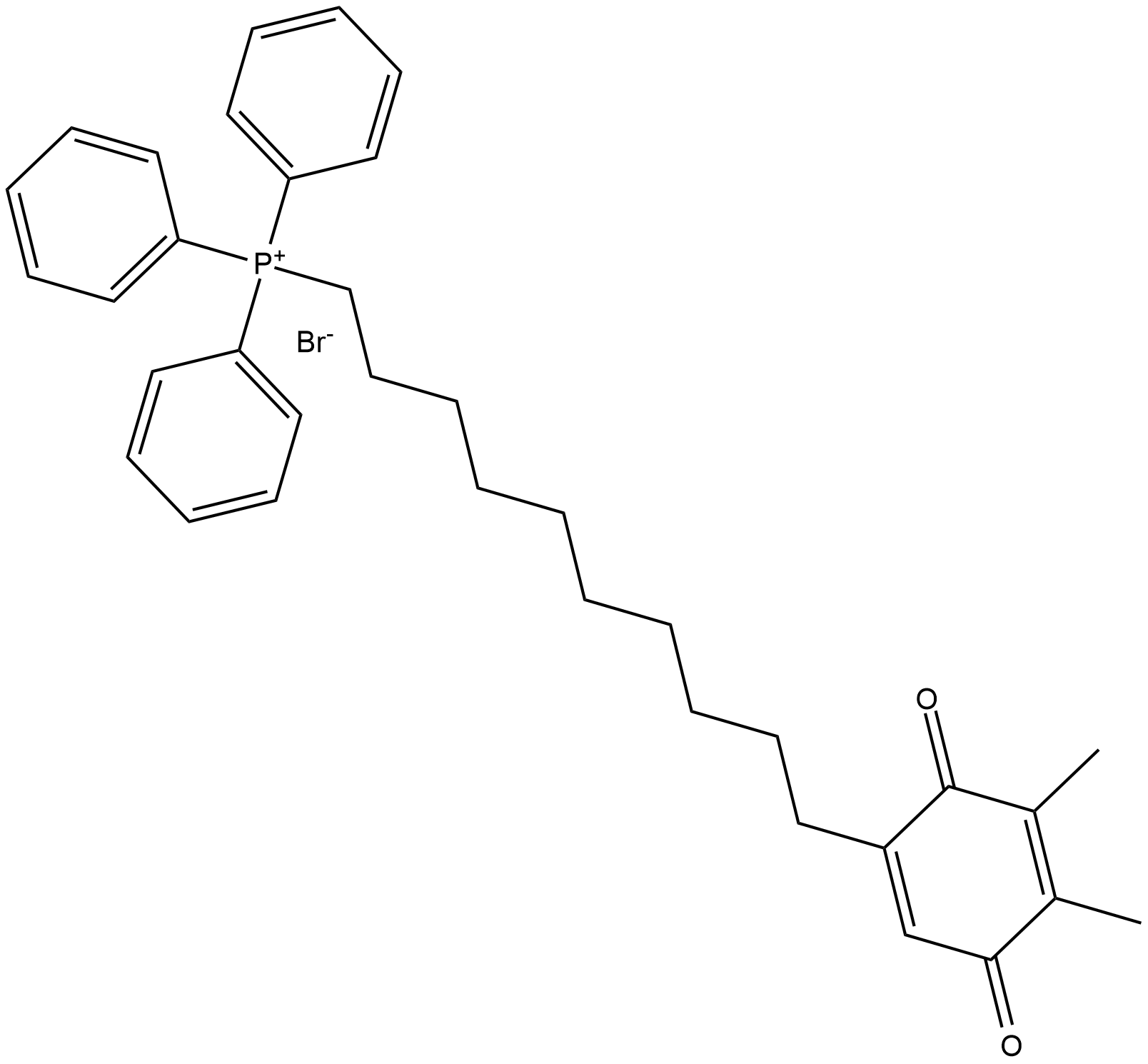
-
GC10042
Vitamin E
fat-soluble vitamin
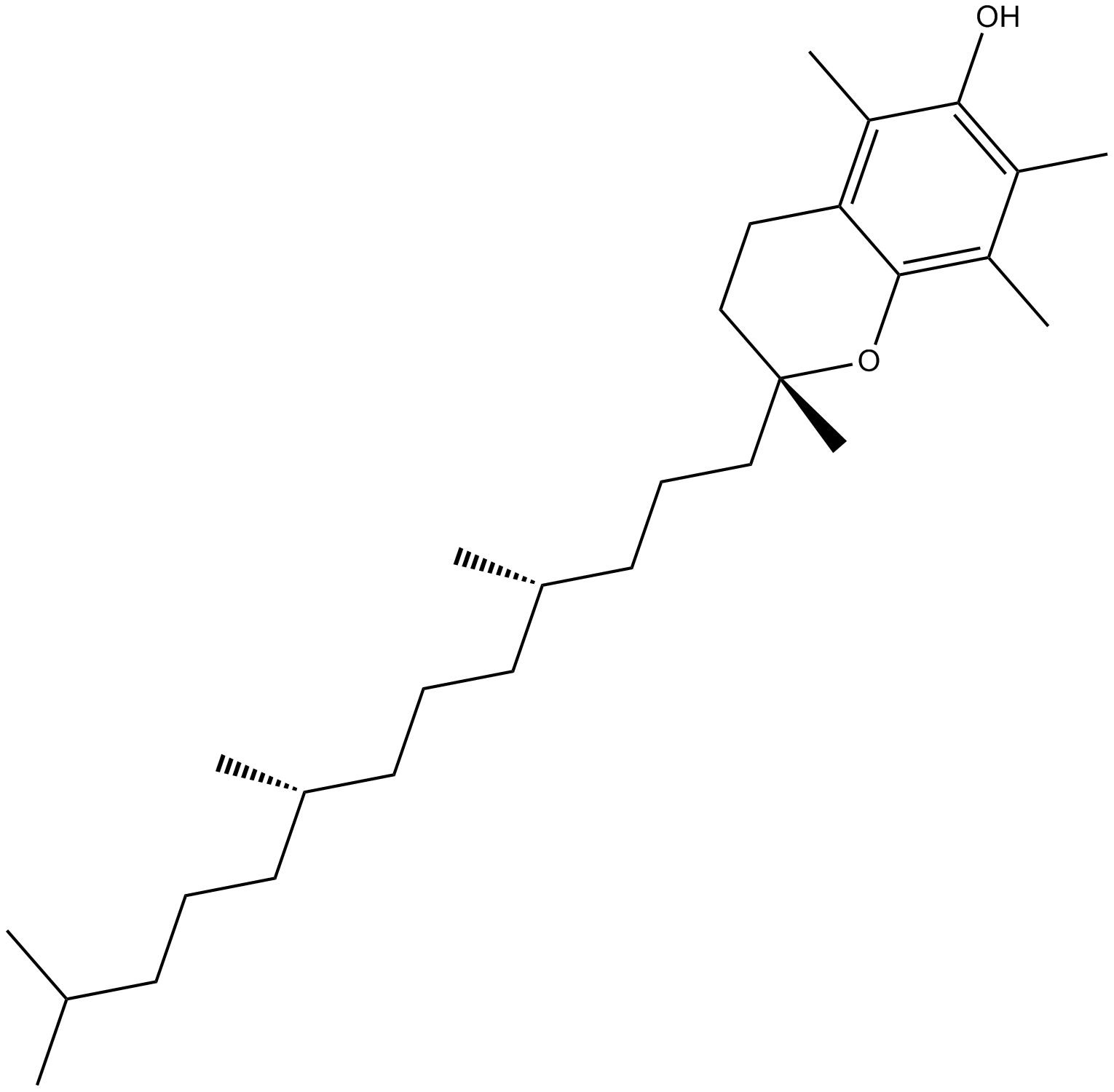
-
GC45595
Vulpinic Acid
VulpinsÄure, ein Flechtenmetabolit, verringert die H2O2-induzierte ROS-Produktion, oxidativen Stress und oxidativen Stress-bedingte SchÄden in humanen Nabelvenen-Endothelzellen (HUVEC).
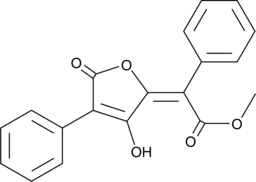
-
GN10074
Xanthotoxol
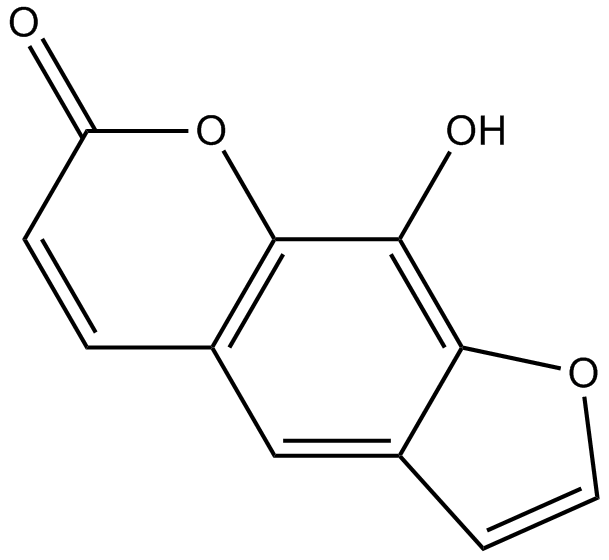
-
GC64552
XJB-5-131
XJB-5-131 ist ein auf Mitochondrien ausgerichteter ROS und ElektronenfÄnger.
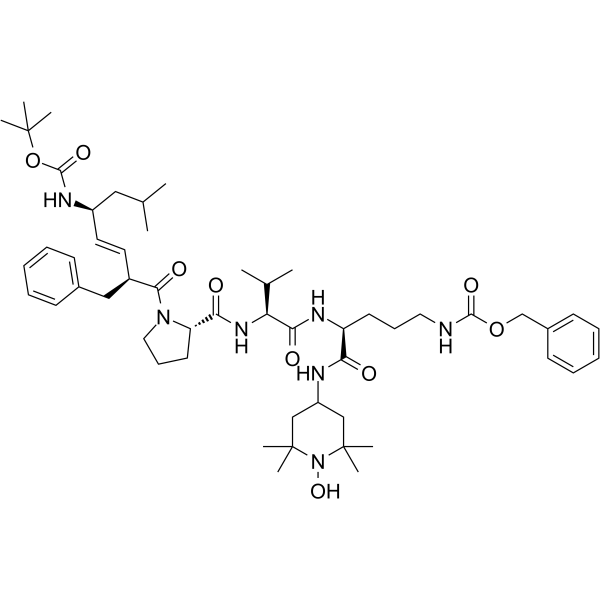
-
GC64127
Xylopine
Xylopin ist ein Aporphin-Alkaloid mit zytotoxischer Wirkung auf Krebszellen. Xylopin induziert oxidativen Stress, verursacht G2/M-Zellzyklusarrest und Apoptose in Krebszellen.
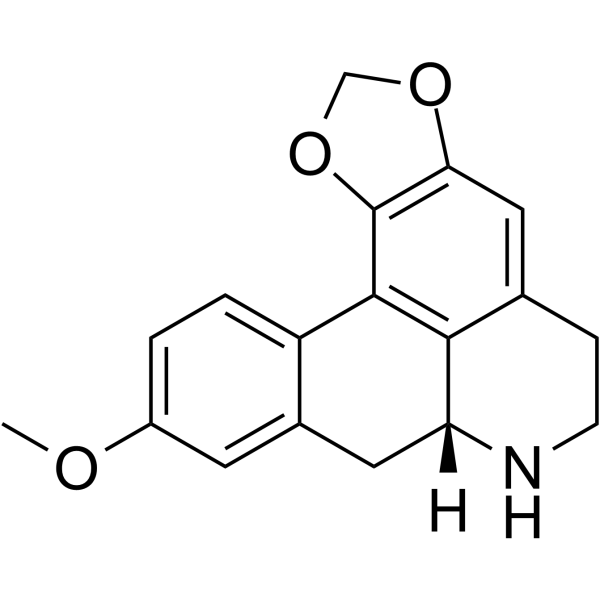
-
GC38399
Zinc Protoporphyrin
A heme oxygenase inhibitor
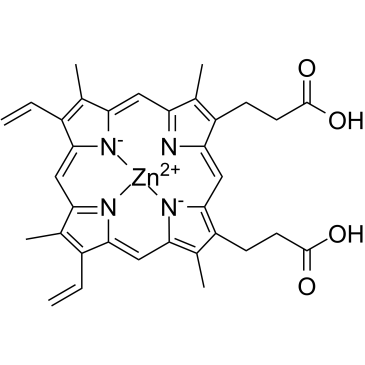
-
GN10650
Ziyuglycoside II
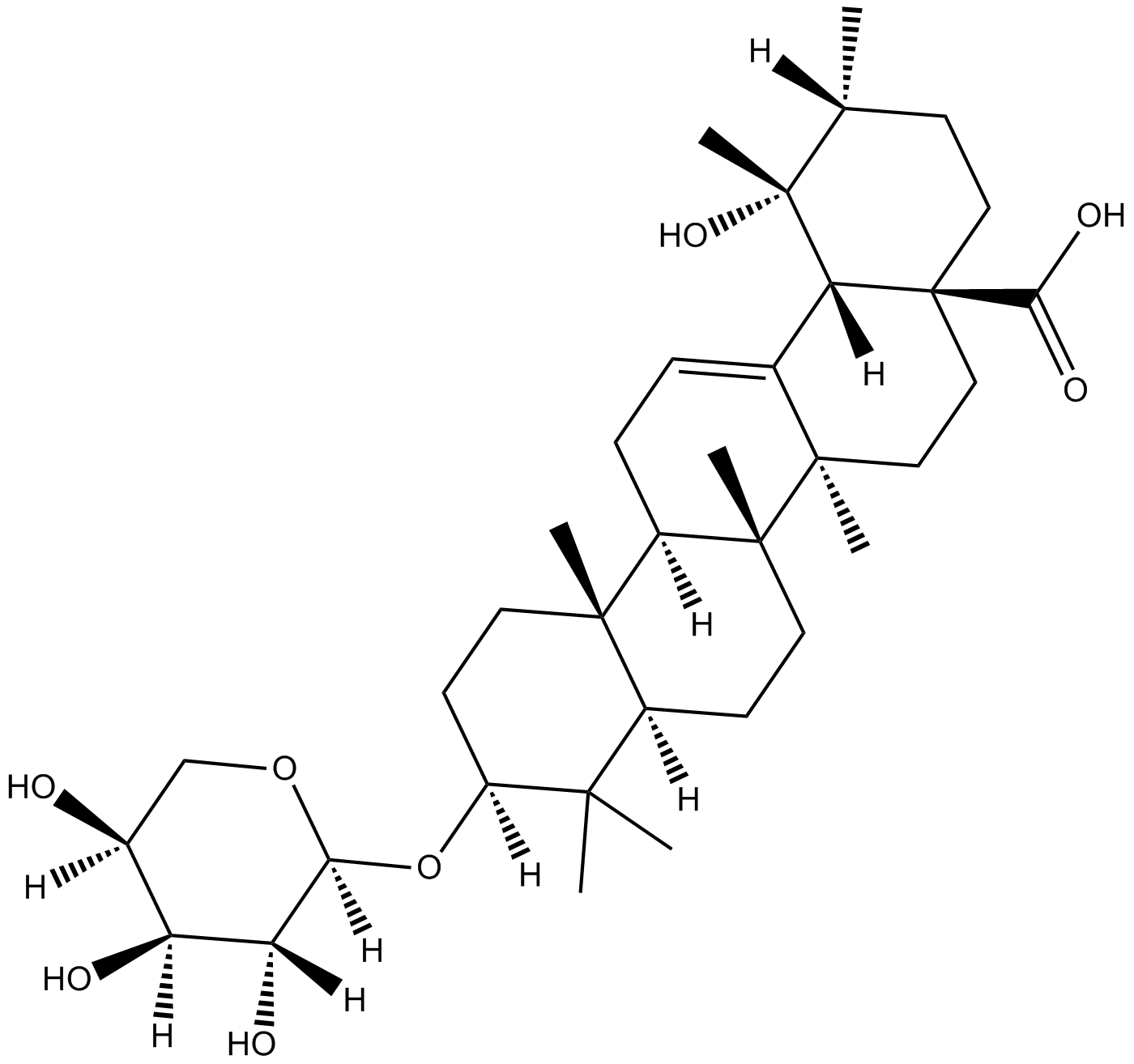
-
GC11513
Zofenopril calcium
Zofenopril Calcium (SQ26991) ist ein Antioxidans, das als Angiotensin-Converting-Enzym-Hemmer wirkt.
